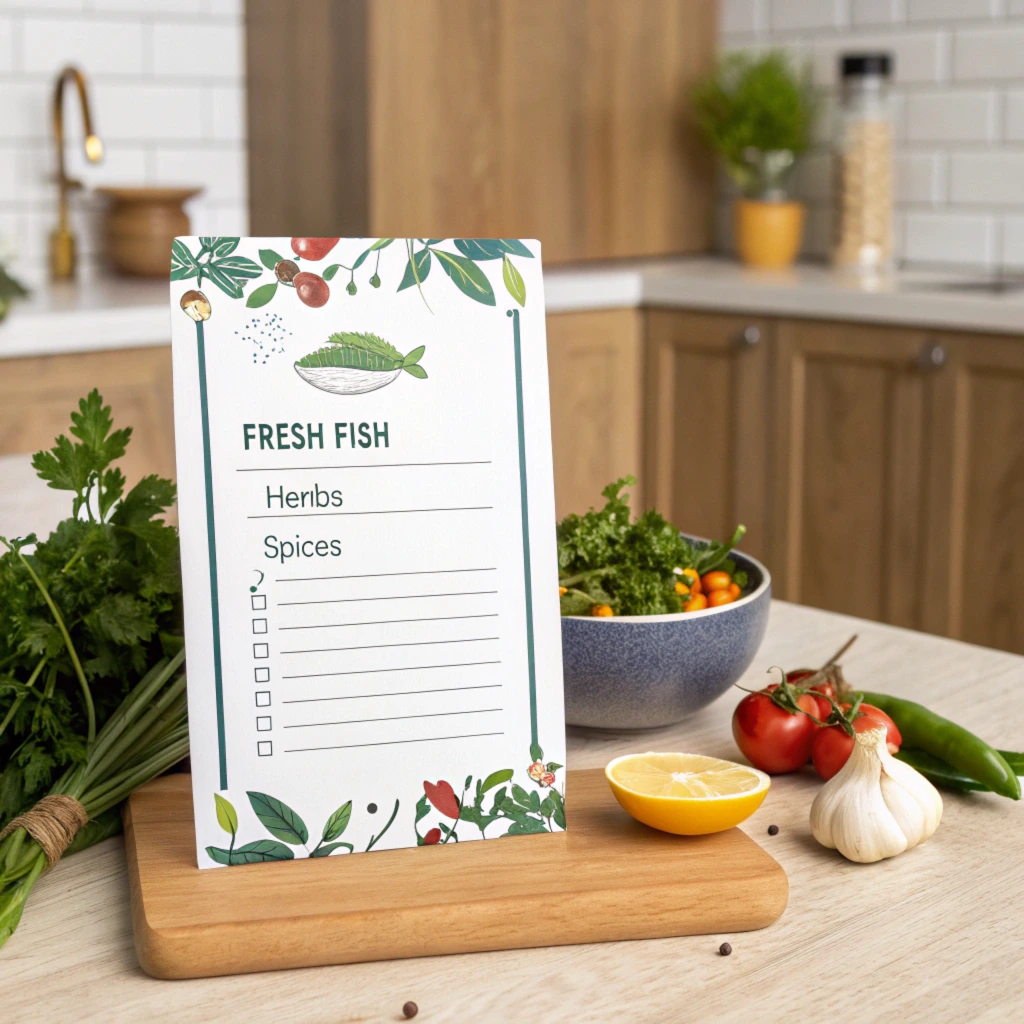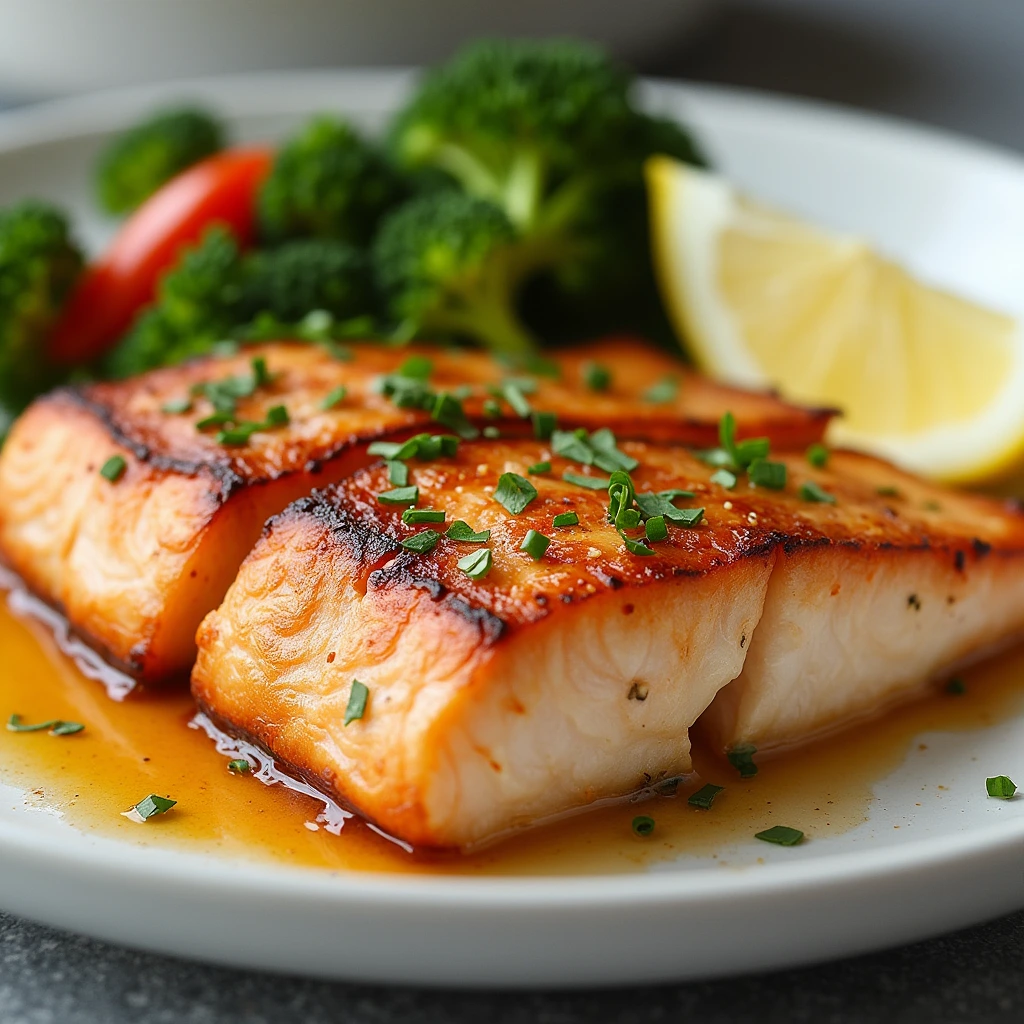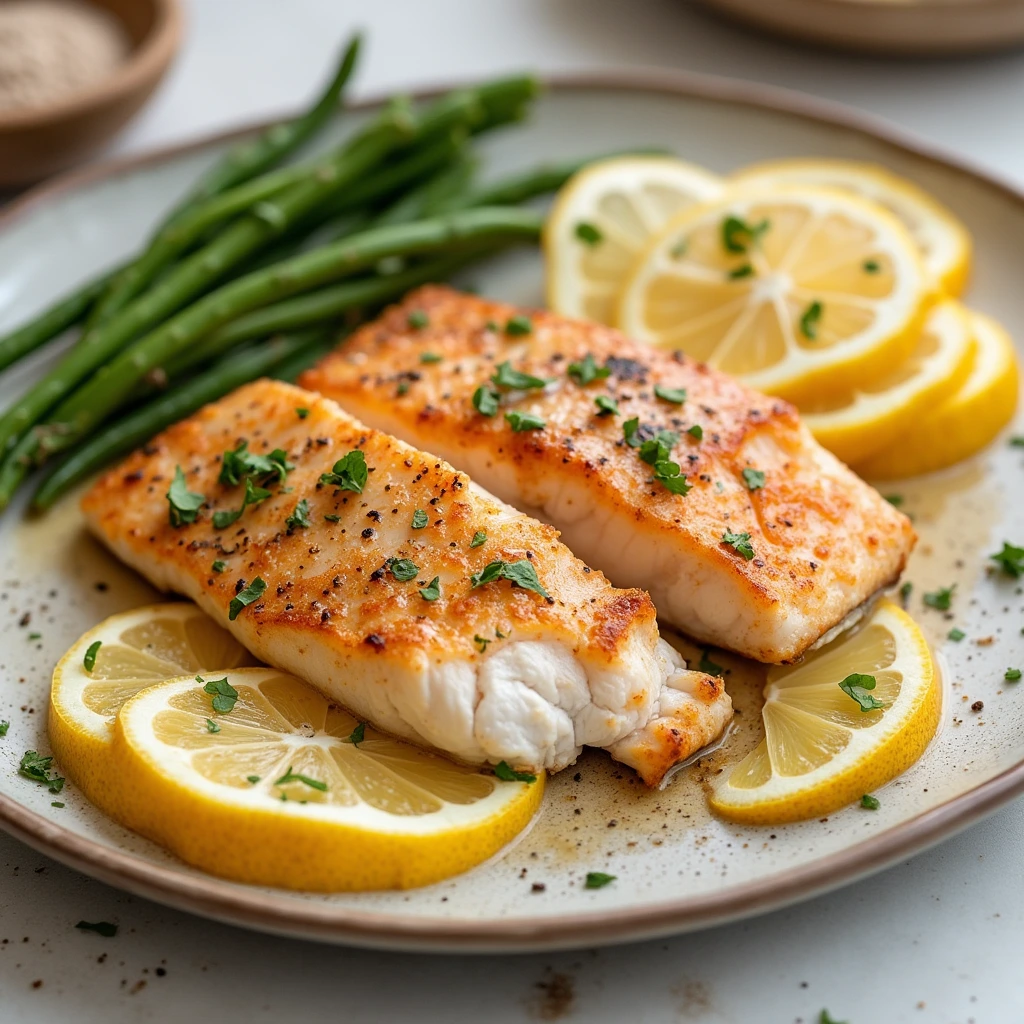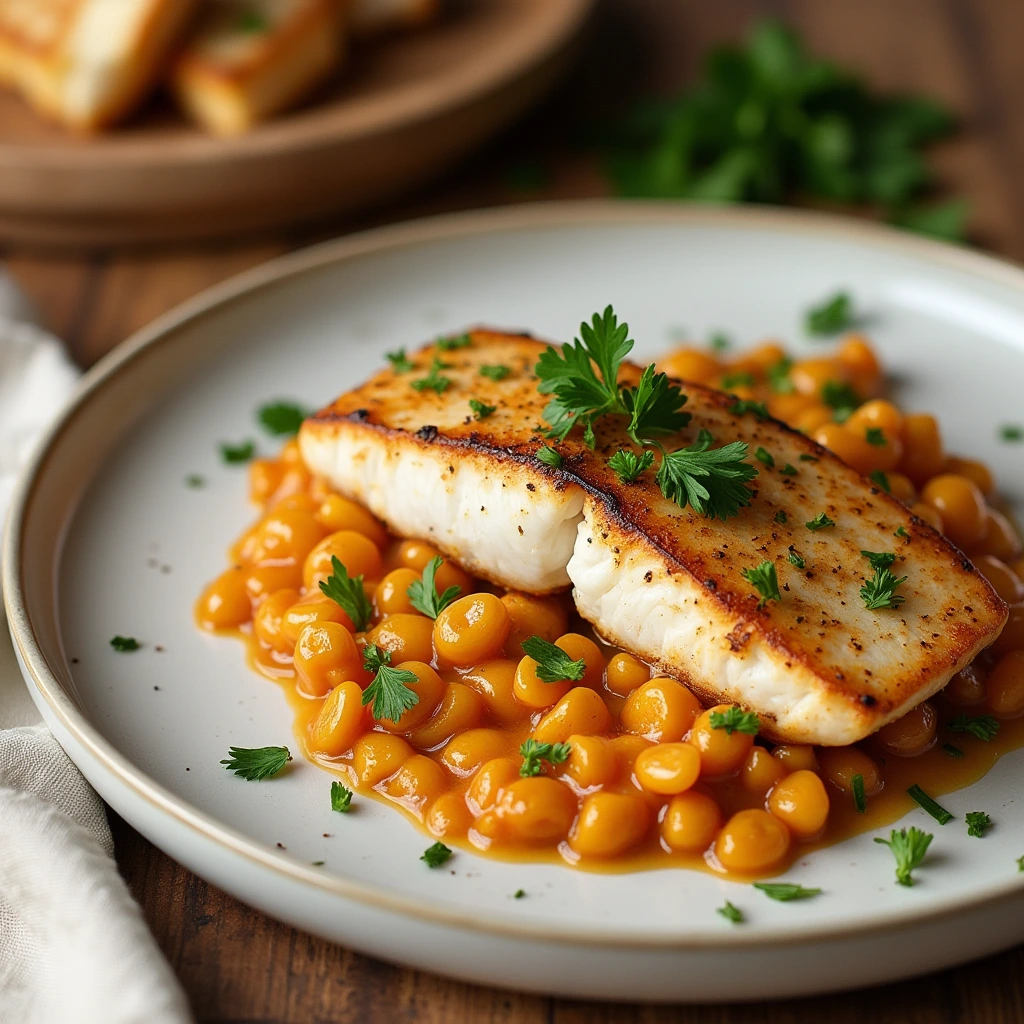introduction how to perfectly season and cook fish
There’s something magical about a perfectly cooked piece of fish—flaky, moist, and bursting with flavor. Yet, for many, cooking fish can feel like a daunting task. If you’ve ever faced these doubts, you’re not alone. But here’s the good news: mastering the art of seasoning and cooking fish is easier than you think. With the right techniques, tools, and a little practice, you can create restaurant-quality fish dishes in your own kitchen. Let’s dive in!

1: Why Seasoning and Cooking Fish Perfectly Matters
The Importance of Proper Seasoning for Enhancing Fish Flavor
Seasoning is the foundation of flavor. Without it, even the freshest fish can taste bland. Salt enhances natural flavors, while herbs and spices add depth and complexity. Proper seasoning ensures every bite is balanced and delicious.
For example, a simple sprinkle of salt and pepper can transform a plain fillet into a savory delight. Adding herbs like dill or parsley can elevate the dish further, while spices like paprika or cumin can introduce exciting new flavors. The key is to season thoughtfully, ensuring that the fish’s natural taste shines through without being overpowered.
Why Cooking Fish Correctly Ensures Texture and Moisture Retention
Overcooked fish becomes dry and rubbery, while undercooked fish can be unsafe to eat. The right cooking method preserves moisture and creates a tender, flaky texture. Perfectly cooked fish melts in your mouth, making it a memorable dining experience.
Fish is delicate and cooks quickly, so timing is crucial. Whether you’re grilling, baking, or pan-searing, paying attention to the cooking process ensures that the fish retains its moisture and texture. For instance, baking fish at the right temperature prevents it from drying out, while pan-searing creates a crispy exterior without overcooking the interior.
Common Challenges When Cooking Fish
- Dryness: Often caused by overcooking or using high heat.
- Sticking: A result of not preheating the pan or using the wrong type of skillet.
- Uneven Cooking: Happens when fish is not at room temperature before cooking.
These challenges can be frustrating, but they’re easily avoidable with the right techniques. For example, using a meat thermometer ensures that fish is cooked to the perfect internal temperature of 145°F, preventing dryness. Preheating the pan and using a non-stick skillet can prevent sticking, while letting fish sit at room temperature before cooking ensures even cooking.
How Mastering Fish Cooking Can Elevate Your Meals
Fish is a versatile protein that can be grilled, baked, pan-seared, or steamed. Perfectly cooked fish can be the star of a weeknight dinner or a showstopper at a dinner party. Learning to cook fish well opens up a world of culinary possibilities.
Imagine serving a beautifully grilled salmon fillet with a side of roasted vegetables, or a pan-seared sea bass with a tangy lemon-butter sauce. These dishes not only taste amazing but also impress your guests. Mastering fish cooking allows you to experiment with different flavors and techniques, making every meal an adventure.
2: Essential Tools and Ingredients for Cooking Fish
Must-Have Tools
- Fish Spatula: Thin and flexible, perfect for flipping delicate fillets.
- Meat Thermometer: Ensures fish reaches the safe internal temperature of 145°F.
- Non-Stick Skillet: Prevents sticking and makes cleanup easier.
- Grill Basket: Ideal for grilling smaller or more delicate fish.
Having the right tools makes cooking fish much easier and more enjoyable. A fish spatula, for example, is designed to handle delicate fillets without breaking them, while a meat thermometer takes the guesswork out of cooking times. A non-stick skillet ensures that your fish doesn’t stick to the pan, and a grill basket makes grilling smaller fish a breeze.
Best Types of Fish for Different Cooking Methods
- Grilling: Salmon, tuna, or swordfish (firm fish that hold up well on the grill).
- Baking: Cod, halibut, or tilapia (mild-flavored fish that cook evenly in the oven).
- Pan-Searing: Sea bass, snapper, or trout (fish with a crispy skin).
- Steaming: Flounder, sole, or halibut (delicate fish that cook quickly).
Choosing the right type of fish for your cooking method is essential. Firm fish like salmon and tuna are perfect for grilling, as they hold their shape well. Mild-flavored fish like cod and tilapia are great for baking, while fish with crispy skin, like sea bass and snapper, are ideal for pan-searing. Delicate fish like flounder and sole are best steamed to preserve their tender texture.
Key Ingredients for Seasoning
- Acids: Lemon, lime, or vinegar to brighten flavors.
- Herbs: Dill, parsley, cilantro, or thyme for freshness.
- Spices: Paprika, cumin, or chili powder for a kick of flavor.
- Fats: Olive oil, butter, or sesame oil for richness.
Seasoning is what transforms a plain piece of fish into a flavorful masterpiece. Acids like lemon and lime add brightness, while herbs like dill and parsley bring freshness. Spices like paprika and cumin introduce warmth and complexity, and fats like olive oil and butter add richness and depth.
How to Choose Fresh Fish at the Market
- Eyes: Clear and bright, not cloudy.
- Flesh: Firm to the touch and springs back when pressed.
- Smell: Fresh and ocean-like, not fishy or ammonia-like.
Choosing fresh fish is crucial for achieving the best results. Look for fish with clear, bright eyes and firm flesh that springs back when pressed. The smell should be fresh and ocean-like, not fishy or ammonia-like. If you’re buying fillets, make sure they’re moist and not dried out.

3: How to Season Fish Like a Pro
Basic Seasoning Techniques
- Start with a light sprinkle of salt and pepper on both sides.
- Drizzle with olive oil to help the seasoning adhere and prevent sticking.
Basic seasoning is simple but effective. A light sprinkle of salt and pepper enhances the natural flavors of the fish, while a drizzle of olive oil helps the seasoning stick and prevents the fish from sticking to the pan.
Flavor Pairings for Different Fish
- Salmon: Dill, lemon, and garlic.
- Tuna: Soy sauce, ginger, and sesame oil.
- Cod: Thyme, paprika, and white wine.
- Tilapia: Cumin, lime, and cilantro.
Different fish pair well with different flavors. Salmon, for example, pairs beautifully with dill, lemon, and garlic, while tuna goes well with soy sauce, ginger, and sesame oil. Cod is complemented by thyme, paprika, and white wine, and tilapia is enhanced by cumin, lime, and cilantro.
How to Make Simple Marinades and Rubs
- Lemon-Garlic Marinade: Combine lemon juice, minced garlic, olive oil, salt, and pepper.
- Chili-Lime Rub: Mix chili powder, lime zest, salt, and a touch of honey.
Marinades and rubs are a great way to add flavor to fish. A simple lemon-garlic marinade combines lemon juice, minced garlic, olive oil, salt, and pepper, while a chili-lime rub mixes chili powder, lime zest, salt, and a touch of honey for sweetness.
Tips for Avoiding Over-Seasoning or Under-Seasoning
- Taste as you go, especially with marinades.
- Remember that some seasonings intensify during cooking.
Seasoning is a balancing act. Taste as you go, especially with marinades, to ensure the flavors are just right. Keep in mind that some seasonings, like salt, can intensify during cooking, so it’s better to start with less and add more if needed.
4: Step-by-Step Guide to Cooking Fish Perfectly
Grilling Fish
- Preheat the grill and oil the grates to prevent sticking.
- Grill skin-side down first for 4-6 minutes, then flip and cook for another 2-3 minutes.
Grilling fish is a great way to add smoky flavor. Preheat the grill and oil the grates to prevent sticking. Grill the fish skin-side down first for 4-6 minutes, then flip and cook for another 2-3 minutes until the fish is opaque and flakes easily.
Baking Fish
- Preheat the oven to 375°F.
- Place fish on a parchment-lined baking sheet and bake for 12-15 minutes.
Baking fish is simple and foolproof. Preheat the oven to 375°F, place the fish on a parchment-lined baking sheet, and bake for 12-15 minutes until the fish is opaque and flakes easily.
Pan-Searing Fish
- Heat a non-stick skillet over medium-high heat.
- Sear fish for 3-4 minutes per side until golden and crispy.
Pan-searing fish creates a crispy exterior and tender interior. Heat a non-stick skillet over medium-high heat, sear the fish for 3-4 minutes per side until golden and crispy, and serve immediately.
Steaming Fish
- Bring water to a simmer in a steamer pot.
- Steam fish for 8-10 minutes until opaque and flaky.
Steaming fish is a healthy and gentle cooking method. Bring water to a simmer in a steamer pot, place the fish in the steamer basket, and steam for 8-10 minutes until the fish is opaque and flaky.
5: Tips and Tricks for Perfect Fish Every Time
For more expert advice on cooking fish, check out this comprehensive guide from Food Network, which offers additional tips and recipes to help you master the art of fish preparation.
How to Tell When Fish Is Cooked
- The flesh should be opaque and flake easily with a fork.
- Use a meat thermometer to check for an internal temperature of 145°F.
Knowing when fish is cooked is key to achieving perfect results. The flesh should be opaque and flake easily with a fork, and a meat thermometer should read 145°F.
Common Mistakes to Avoid
- Overcooking: Fish cooks quickly, so keep a close eye on it.
- Using Cold Fish: Let fish sit at room temperature for 10-15 minutes before cooking.
Avoiding common mistakes ensures that your fish turns out perfectly every time. Overcooking is a common issue, so keep a close eye on the fish and use a meat thermometer. Letting fish sit at room temperature before cooking ensures even cooking.
How to Store and Reheat Cooked Fish
- Store in an airtight container in the fridge for up to 2 days.
- Reheat gently in the oven or microwave with a splash of water to retain moisture.
Storing and reheating fish properly preserves its flavor and texture. Store cooked fish in an airtight container in the fridge for up to 2 days, and reheat gently in the oven or microwave with a splash of water to retain moisture.
Quick Fixes for Overcooked or Under-Seasoned Fish
- Overcooked: Serve with a flavorful sauce or broth to add moisture.
- Under-Seasoned: Sprinkle with flaky salt and a squeeze of lemon before serving.
Even if things don’t go perfectly, there are quick fixes. Overcooked fish can be saved with a flavorful sauce or broth, while under-seasoned fish can be enhanced with a sprinkle of flaky salt and a squeeze of lemon.

Frequently Asked Questions About Cooking Fish
What’s the Best Way to Cook Fish for Beginners?
- Start with baking or pan-searing, as these methods are forgiving and easy to master.
How Do I Prevent Fish from Sticking to the Pan?
- Use a non-stick skillet and ensure the pan is hot before adding the fish.
What Are the Best Seasonings for Grilled Fish?
- Try a mix of olive oil, lemon zest, garlic, and fresh herbs like dill or parsley.
Can I Use Frozen Fish for These Recipes?
- Yes, just thaw it properly in the fridge overnight before cooking.
Tables for Recipes or Techniques
Table 1: Fish Cooking Methods and Times
| Cooking Method | Fish Type | Cooking Time | Internal Temperature |
|---|---|---|---|
| Grilling | Salmon | 4-6 minutes/side | 145°F |
| Baking | Cod | 12-15 minutes | 145°F |
| Pan-Searing | Tilapia | 3-4 minutes/side | 145°F |
| Steaming | Sea Bass | 8-10 minutes | 145°F |
Table 2: Flavor Pairings for Fish
| Fish Type | Herbs/Spices | Acids | Additional Pairings |
|---|---|---|---|
| Salmon | Dill, parsley | Lemon, white wine | Garlic, butter |
| Tuna | Cumin, chili powder | Lime, soy sauce | Ginger, sesame oil |
| Cod | Thyme, paprika | White wine, vinegar | Tomatoes, olives |
| Tilapia | Cilantro, cumin | Lime, orange juice | Avocado, black beans |
6: Exploring Global Fish Recipes to Inspire Your Cooking
Cooking fish isn’t just about mastering techniques—it’s also about exploring flavors from around the world. Different cultures have unique ways of preparing and seasoning fish, and trying these recipes can add excitement to your meals. Here are a few global-inspired fish dishes to try:
Mediterranean-Style Baked Fish
- Ingredients: White fish (like cod or halibut), cherry tomatoes, olives, capers, garlic, olive oil, lemon, and fresh herbs like oregano or thyme.
- Method: Place the fish in a baking dish, surround it with tomatoes, olives, and capers, drizzle with olive oil and lemon juice, and bake at 375°F for 12-15 minutes.
- Why It Works: The Mediterranean diet emphasizes fresh, simple ingredients that highlight the natural flavors of fish.
Asian-Inspired Steamed Fish
- Ingredients: Whole fish (like sea bass or snapper), ginger, scallions, soy sauce, sesame oil, and a splash of rice vinegar.
- Method: Steam the fish for 8-10 minutes, then top with a sauce made from ginger, scallions, soy sauce, and sesame oil.
- Why It Works: Steaming preserves the delicate texture of the fish, while the sauce adds a burst of umami flavor.
Latin American Ceviche
- Ingredients: Fresh white fish (like tilapia or sea bass), lime juice, red onion, cilantro, jalapeño, and avocado.
- Method: Marinate the fish in lime juice for 15-20 minutes until it “cooks” in the acid, then mix with the other ingredients.
- Why It Works: Ceviche is a refreshing, no-cook dish that’s perfect for hot summer days.
Indian-Spiced Grilled Fish
- Ingredients: Salmon or tuna, turmeric, cumin, coriander, chili powder, garlic, and yogurt.
- Method: Marinate the fish in a mixture of spices and yogurt, then grill for 4-6 minutes per side.
- Why It Works: The yogurt tenderizes the fish, while the spices add warmth and depth.
7: How to Pair Fish with Sides and Sauces
The right sides and sauces can elevate your fish dish from good to extraordinary. Here are some ideas to complement your perfectly cooked fish:
Classic Side Dishes for Fish
- Roasted Vegetables: Asparagus, zucchini, or Brussels sprouts pair well with almost any fish.
- Grains: Quinoa, couscous, or wild rice add texture and heartiness.
- Salads: A fresh green salad or a tangy coleslaw balances the richness of fish.
Simple Sauces to Enhance Flavor
- Lemon Butter Sauce: Melt butter with lemon juice, garlic, and parsley for a classic pairing.
- Herb Pesto: Blend basil, parsley, garlic, pine nuts, and olive oil for a vibrant sauce.
- Tartar Sauce: Mix mayonnaise, pickles, capers, and lemon juice for a tangy condiment.

Conclusion: Master the Art of Cooking Fish
Cooking fish perfectly doesn’t have to be intimidating. With the right techniques, tools, and seasonings, you can create delicious, restaurant-quality fish dishes at home. Whether you’re grilling, baking, or pan-searing, these tips will help you achieve flawless results every time.
Call-to-Action: What’s your favorite way to cook fish? Share your go-to recipes or tips in the comments below!
